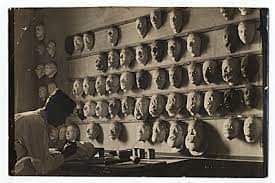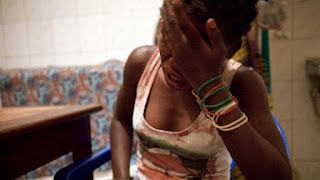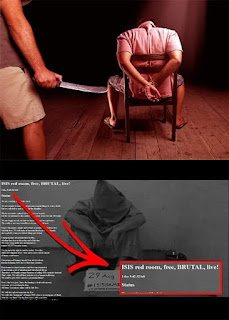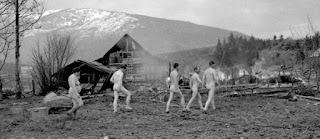Anna Coleman Ladd is a "distinctive stranger", nowadays few people remember her but she took part in “repairing” many broken faces of WWI soldiers disfigured by their wounds.
Anna Coleman Ladd is a "distinctive stranger", nowadays few people remember her but she took part in “repairing” many broken faces of WWI soldiers disfigured by their wounds.
Anna Coleman Watts born on July 15, 1878 in Philadelphia, USA.
In 1905, at the age of 26, she married a doctor, Maynard Ladd with whom she would have a daughter Gabriella May, and they settled in Boston.
The young bride continued her studies with sculptor Bela Patt, who made decorative fountains, nymphs, leprechauns, mythological creatures, busts... One of his works "Triton babies" is exhibited at the San Francisco International Exhibition in 1915.
At the same time, she wrote two novels and two plays.
It's in Boston where she hears of a certain Francis Derwent Wood, located in London, who helps soldiers disfigured by the war by making masks for them.
In December 1917, Anna joined her husband, a member of the Red Cross, who had been sent to France a few months earlier. In Paris, and in collaboration with the American Red Cross, she creates her own studio on the same model as the one from the "Tin Noses Shop".
She opened her studio in January 1918.
To achieve successful results, Anna studied photographs of the soldiers before their mutilation. She paints the masks directly onto the soldier's face in order to find the most faithful carnage possible.
Each mask is different and unique to meet the specific needs of each injured, for some it's missing half of the face, for others it's missing an eye or nose.
But Anna doesn't just give them a face, she also gets to know them over a cup of tea or coffee, she wants to know their habits, their family. She offers them a welcoming and warm setting and meets them in a flowery studio decorated with American and French flags, but there was no mirror. Thanks to the photographs and the moments spent with them, she chooses the expression that suits them best, this is all the more important that it is the one that will last forever.
In order to make the mask, Anna made a face plaster mold and, thanks to the photographs, she molds the mask to get the same features as in the photos. This only covers the damaged part of the face, it is fixed by glasses, ribbons or threads.
Thanks to Anne Coleman Ladd many broken soldiers were finally stepping out of their homes again without suffering from the gaze of others.
Upon returning from war, they were far from being treated as heroes, they were traumatized, rejected and suffered physical and psychological consequences. Women were unable to kiss their husbands, children scared by this unrecognizable father. Some who couldn't find their family after the war for fear of disgusting or frightening them, finally dared to come home.
Even the authorities asked them not to expose their wounds so as not to demoralize the country; told them they are monstrous, deformed, vile...
In one of her reports, dating back to 1919, Anna explains that a man, injured two years before, had never returned home for fear that his mother would see how poorly he was, he had only one eye left.
He came to see Anna after fifty operations. She adds that people are used to seeing men with missing legs or arms but they are not used to an abnormal face, so it allows you to get an idea of a person's emotions, honesty and intentions.
Some wrote to her that they can "live again", one of them wrote that he will now be able to marry the woman he loves.
The Studio closed in 1919, lack of sufficient grants. Anna, assisted by four assistants, created nearly two hundred masks.
Anne Coleman Ladd didn’t just give back the “brave faceless ones” (brave faceless) as she calls them, a face but she gave them back dignity and a social life, lost in the atrocities of war, to a time when plastic surgery and repairs were only in their beginnings. In 1932, she received the Legion of Honor for her efforts.















Comments
Post a Comment